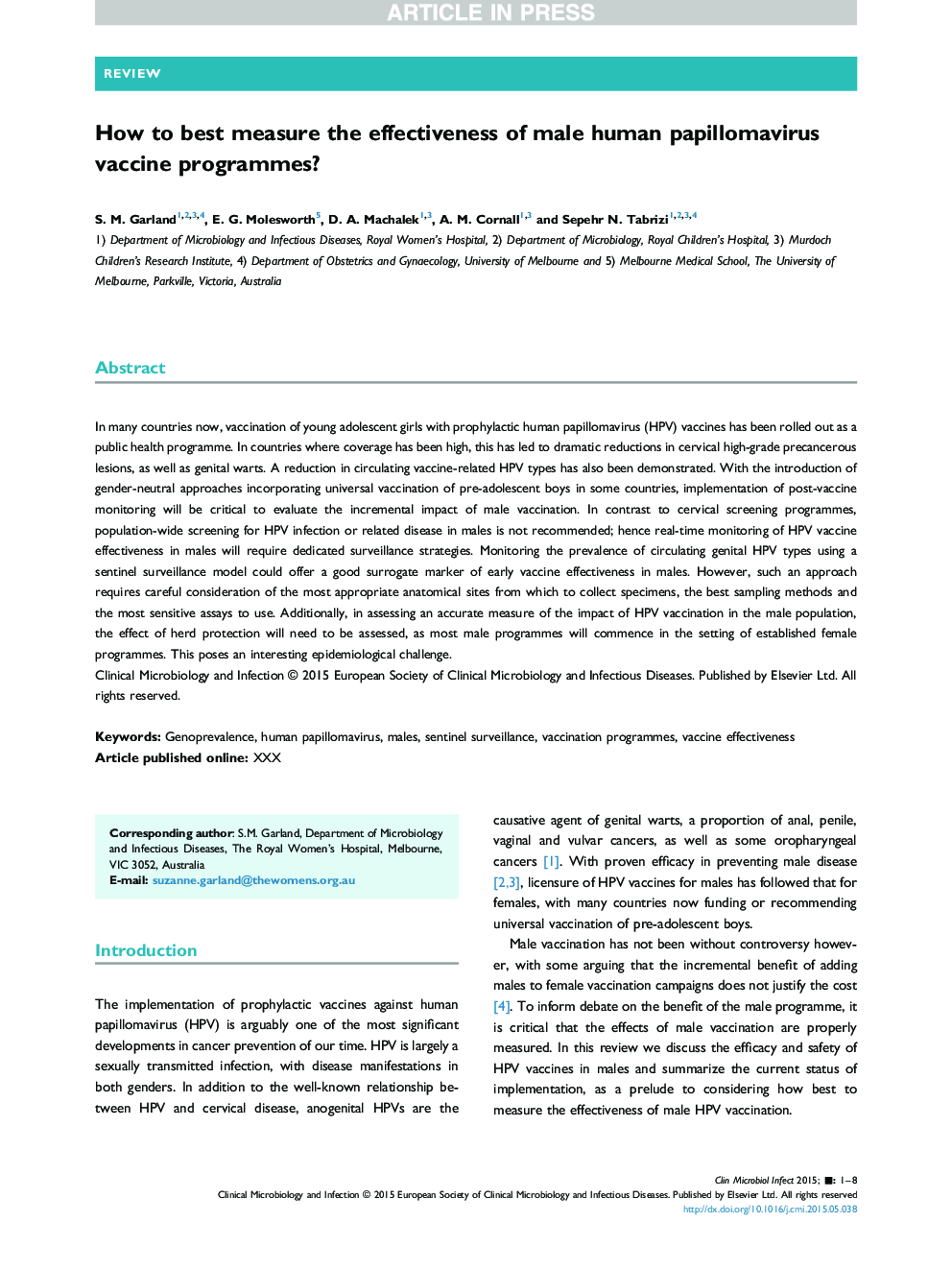| کد مقاله | کد نشریه | سال انتشار | مقاله انگلیسی | نسخه تمام متن |
|---|---|---|---|---|
| 6129275 | 1222154 | 2015 | 8 صفحه PDF | دانلود رایگان |
عنوان انگلیسی مقاله ISI
How to best measure the effectiveness of male human papillomavirus vaccine programmes?
ترجمه فارسی عنوان
چگونه می توان بهترین اثربخشی برنامه های واکسن ویروس پاپیلومای مرد را اندازه گیری کرد؟
دانلود مقاله + سفارش ترجمه
دانلود مقاله ISI انگلیسی
رایگان برای ایرانیان
کلمات کلیدی
موضوعات مرتبط
علوم زیستی و بیوفناوری
ایمنی شناسی و میکروب شناسی
میکروب شناسی
چکیده انگلیسی
In many countries now, vaccination of young adolescent girls with prophylactic human papillomavirus (HPV) vaccines has been rolled out as a public health programme. In countries where coverage has been high, this has led to dramatic reductions in cervical high-grade precancerous lesions, as well as genital warts. A reduction in circulating vaccine-related HPV types has also been demonstrated. With the introduction of gender-neutral approaches incorporating universal vaccination of pre-adolescent boys in some countries, implementation of post-vaccine monitoring will be critical to evaluate the incremental impact of male vaccination. In contrast to cervical screening programmes, population-wide screening for HPV infection or related disease in males is not recommended; hence real-time monitoring of HPV vaccine effectiveness in males will require dedicated surveillance strategies. Monitoring the prevalence of circulating genital HPV types using a sentinel surveillance model could offer a good surrogate marker of early vaccine effectiveness in males. However, such an approach requires careful consideration of the most appropriate anatomical sites from which to collect specimens, the best sampling methods and the most sensitive assays to use. Additionally, in assessing an accurate measure of the impact of HPV vaccination in the male population, the effect of herd protection will need to be assessed, as most male programmes will commence in the setting of established female programmes. This poses an interesting epidemiological challenge.
ناشر
Database: Elsevier - ScienceDirect (ساینس دایرکت)
Journal: Clinical Microbiology and Infection - Volume 21, Issue 9, September 2015, Pages 834-841
Journal: Clinical Microbiology and Infection - Volume 21, Issue 9, September 2015, Pages 834-841
نویسندگان
S.M. Garland, E.G. Molesworth, D.A. Machalek, A.M. Cornall, Sepehr N. Tabrizi,
